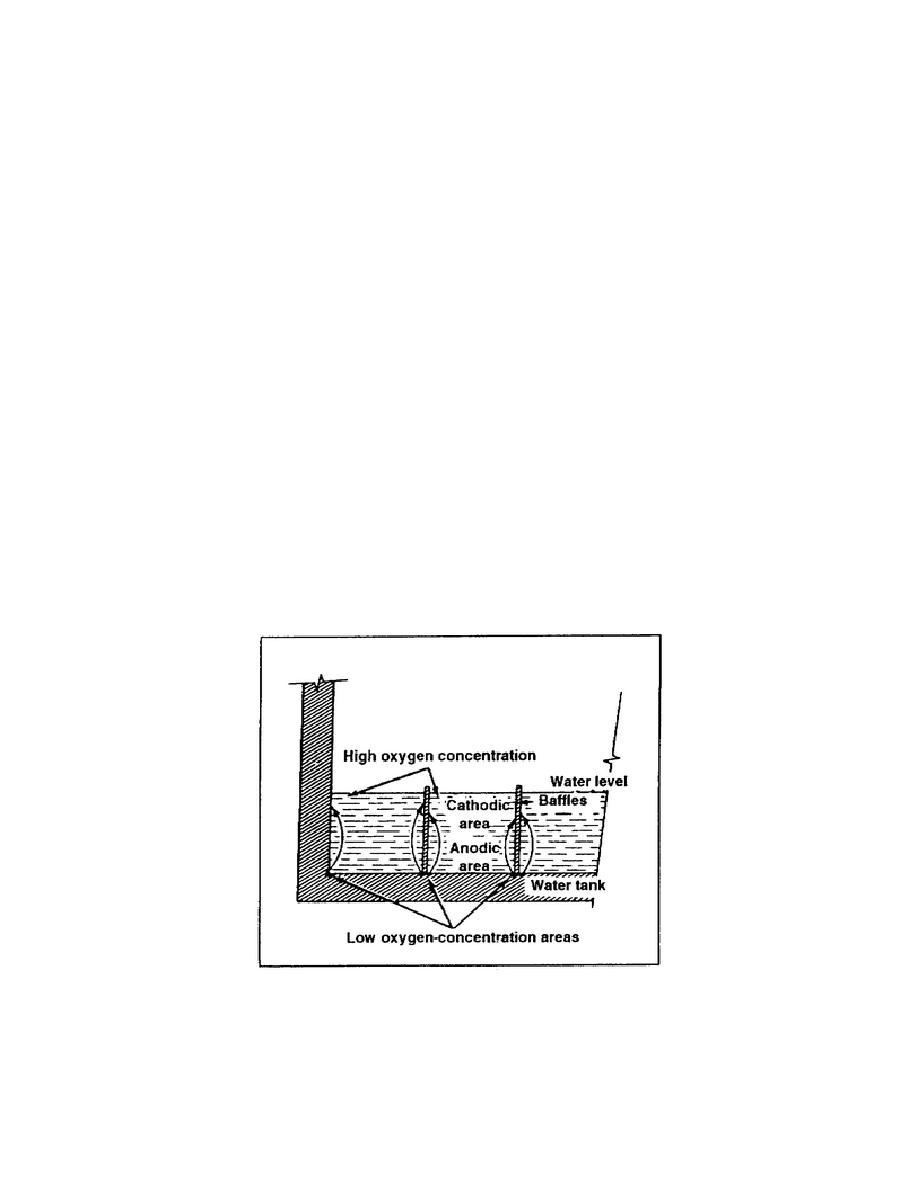
There are three types of concentration cell corrosion; they are metal-ion, oxygen, and active-passive.
(1) Metal-ion concentration cell corrosion consists of different concentrations of metallic
ions in various water parts. High metal-ion concentrations will exist under the surfaces where the water
is stagnant, whereas low metal-ion concentrations will exist adjacent to the crevice that is created by the
raised surfaces. An electrical-potential will exist between the high- and low-concentration points. The
area that has the high metal-ion concentration will be anodic and will corrode. For example, when a
large object (such as a pipeline) passes through different soil environments, major corrosion cells are
established and will extend over several miles. This condition results in several amperes of current
flowing in the pipeline metal. Corrosion of the pipeline will occur wherever the current leaves the pipe's
surface.
(2) Oxygen concentration cell corrosion occurs when a solution contains varying amounts of
dissolved oxygen cells. Oxygen develops--
At any point where the oxygen in the air is not allowed to diffuse into the solution.
Under either metallic or nonmetallic deposits (dirt) formed on metal surfaces.
Under fraying metal surfaces such as riveted lap joints.
Under gaskets, wood, rubber, plastic tape, and other materials in contact with metal
surfaces.
In low oxygen-concentration areas (anode)(Figure 5-8).
Figure 5-8. Low oxygen-concentration areas
EN0562
5-10



 Previous Page
Previous Page
